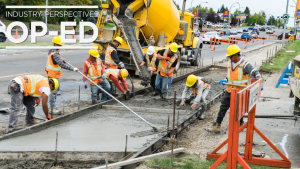For contractors, knowing the day-to-day operations of multiple project teams, the progress of their work, and where they’re going next is likely a recognizable challenge.
Especially when the tools being used to capture and analyze workforce data require constant manual updates and don’t make it any easier. For the last 20 years or so, workforce planning has been done using a combination of spreadsheets, paper and software tools built in-house (often just more spreadsheets).
These manual processes are prone to human error and result in a hesitation to share information across the organization.
In terms of workforce visibility, this creates a dilemma where only one or two people have access to workforce data and the larger team doesn’t have the information they need to do their jobs effectively. Information about workforce availability and skills then falls victim to the “telephone effect.”
A good example of this is when HR needs to hire last minute and the amount of time to properly evaluate candidates is reduced to weeks, or even days.
The telephone effect isn’t anyone’s fault specifically. It has more to do with outdated tools than a lack of communication.
Trying to manage workforce data in a series of spreadsheets, for some operations managers, can eat up an entire day’s worth of time every week.
Trying to manage project allocations and forecast project needs in an industry as fluid as construction is nearly impossible without the right tools for the job.
Technology adoption in construction is accelerating more than ever before.
To stay competitive, contractors can no longer be relying on dated operational tools that stifle core processes.
Rapid adoption by key industry players has also turned new software technologies from “nice-to-haves” to “must-haves” in just a couple years.
It will be crucial to not get left behind.
Four benefits of improving workforce visibility in construction
A contractor’s workforce availability directly impacts the day-to-day work of nearly every department: retention, talent development, client relations and satisfaction, operational effectiveness, reputation, etc.
With a centralized system in place and a unified view of your entire workforce, here are a few of the benefits you may experience:
More effective scheduling – With better visibility into people, their locations and their current and upcoming project assignments, contractors are better equipped to allocate their workforce based on business needs instead of slotting in the next available person.
For example, if a contractor is looking to improve client retention, they can allocate the client’s favourite team leads to the project.
If a contractor is looking to improve employee retention, they can build project teams that have worked well together in the past or prioritize allocating workers with shorter commute times.
Workforce visibility helps be more strategic with team members to improve your bottom line.
Better workforce planning – Accurate visibility of teams’ skills, experience and certifications combined with accurate forecasting of project needs provides the opportunity to plan in a more intelligent, meaningful way.
Having access to historical data also helps to staff more effectively for future projects without the headache of consolidating data from multiple sources.
Workforce retention – When an entire team is accounted for and able to share information with management, it’s inevitable that they will be more engaged in their work and the company.
According to Gallup, if offered a 20 per cent raise with another company, only 37 per cent of engaged workers would even consider leaving, almost 20 per cent less than their unengaged counterparts.
Data-driven decision-making – Accurate workforce data can be used to make informed decisions and track the impact of those decisions.
Having visibility of allocation start and end dates, project locations, utilization rates, skills and experience and upcoming project needs makes identifying trends and data analysis much easier.
Improving workforce visibility can also help to identify team members that are ready to move up the company ladder, or ready to try new experiences to develop their careers.
Showing your team that you’re engaged with their career development can help to significantly reduce employee turnover and makes your company more attractive to potential candidates. The next generation of construction professionals want to know they have a future at your company.
Michel Richer is the Content Marketing Manager at Bridgit. He got his start in the construction industry at an early age with a local restoration company. Richer is driven to propel the construction industry forward by helping to eliminate outdated, ineffective processes. Send Industry Perspectives comments and column ideas to editor@dailycommercialnews.com.











Recent Comments
comments for this post are closed